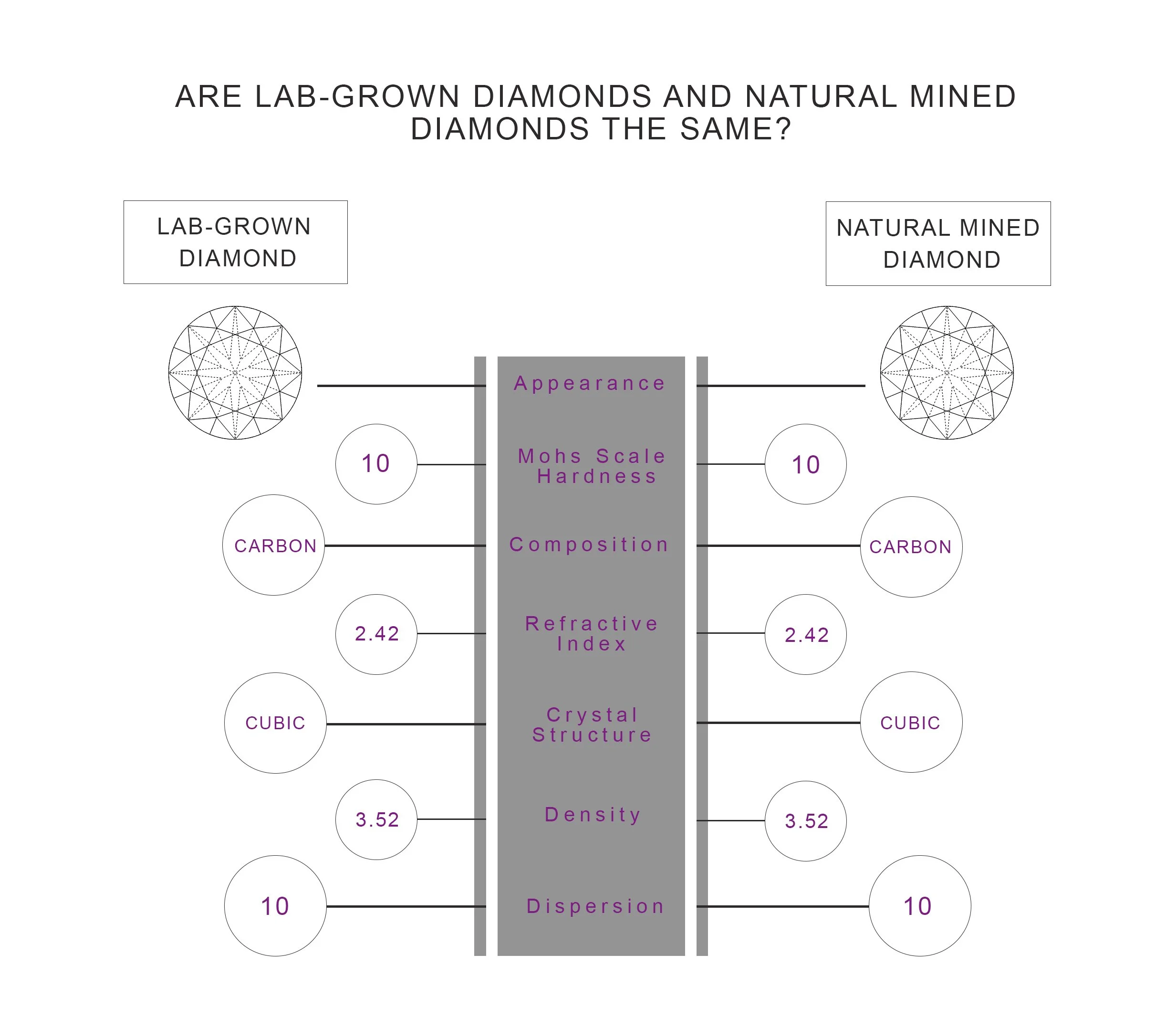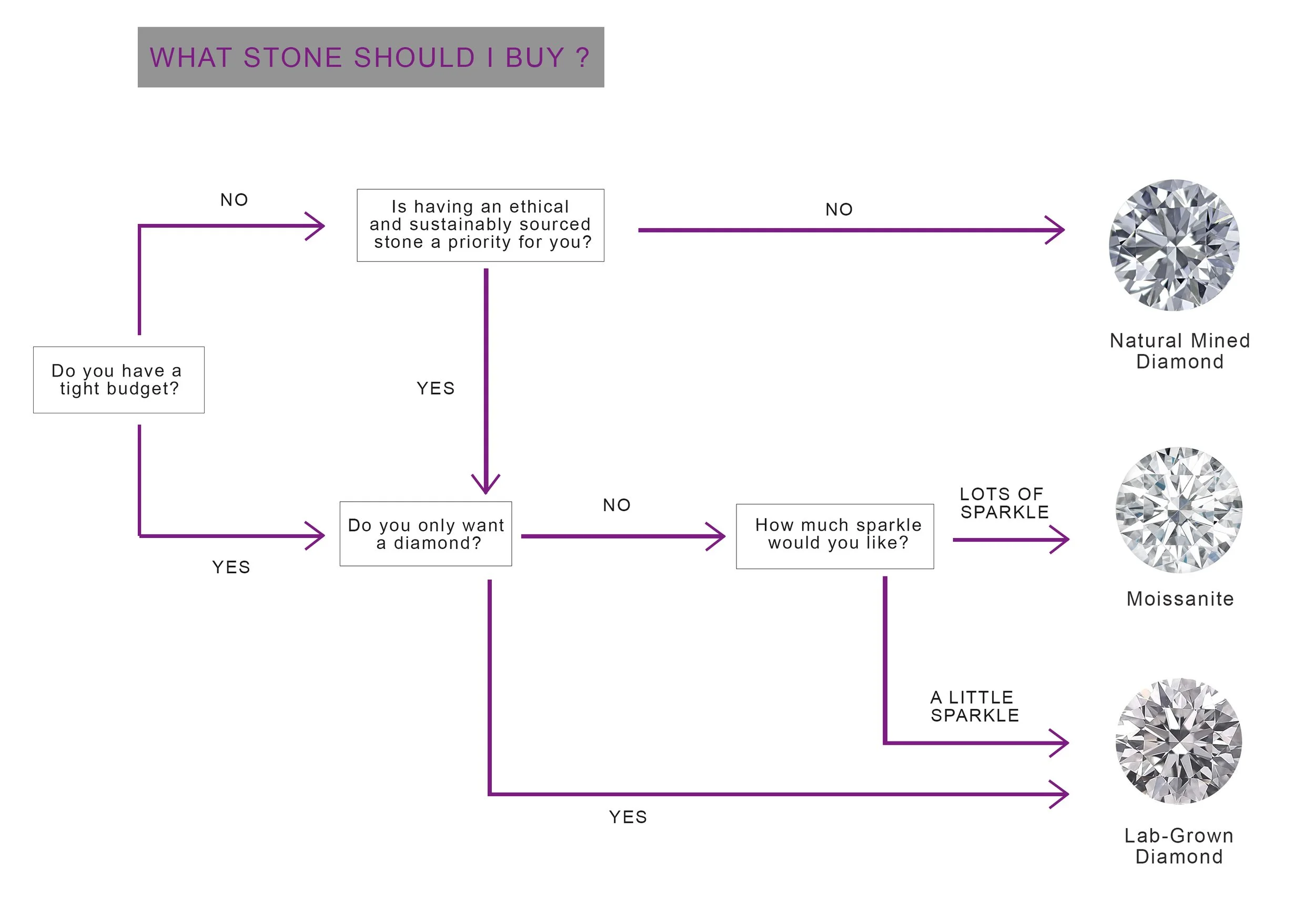Diamond buying guide
Lab-Grown Diamond or Natural Mined Diamond
We understand that many of you would like to make ethical and financially conscious decisions when it comes to buying an engagement ring or any piece of jewellery and feel that it is important to talk about the different diamond options that may inform your decisions around your jewellery. We have seen a recent rise of ethical and economical concerns around natural diamonds which has caused a shift in popularity towards laboratory grown diamonds. However, there are still a lot of uncertainty and misconceptions around Lab-grown diamonds, often being seen as ‘fake diamonds’.
Lab-grown diamonds are still diamonds; what differentiates them from their natural counterparts is the origin of the stone. Lab-grown diamonds go through a man-made process in a laboratory with controlled conditions that mimic the environment the way natural diamonds are created in the earth. It can be created in a matter of weeks whereas natural mined diamonds take billions of years to form within the earth’s crust before it is mined, cut and polished. Lab-grown diamonds has become a popular choice for some as it is more economical than natural mined diamonds and more ethical and sustainable to produce.
Although its origins are what distinguishes them apart, in terms of its structure, lab-grown diamonds and natural mined diamonds are the same and display identical optical, physical and chemical characteristics which can be seen in the illustration on the left. Both lab-grown diamonds and natural mined diamonds can be colourless or near colourless, with slight inclusions or flawless as they follow the GIA grading system (colour, clarity, cut, carat). You can also get Lab-grown diamonds in range of colours and a variety of shapes.
Whether you choose to go for a natural mined diamond or opt for a lab-grown diamond, we will support you through the design process and help you find a diamond that is best for you.
Lab-Grown Diamonds vs Diamond Simulants
Lab-grown diamonds are different to diamond simulants such as moissanite or cubic zirconia, which may look like diamonds but are not pure carbon crystals. As mentioned before, lab-grown diamonds display the same chemical structure as natural-mined diamonds whereas moissanite is made from a silicone structure. However, moissanite are often used in engagement rings as a diamond alternative and appeals to some due to its fire and sparkle and more budget friendly cost. Diamonds have a hardness of 10 on the Mohs scale whereas the hardness of moissanites are 9.25 so they are slightly less durable than diamonds but still a pretty strong stone.
The 4Cs: COLOUR - CLARITY - CUT - CARAT WEIGHT
CARAT WEIGHT
The term carat comes from the carob bean that was used to weight gemstones, being its weight approximately one carat. The carob bean was also used in the gold trade and the word karat is now used to indicate its purity (see our metal guide).
In 1907 the fourth General Conference on Weights and Measures adopted the metric carat as a unit of mass for gemstones and it equals 1/5 of a gram or 200mg. In 1913 was introduced in the USA and in 1914 in the UK.
Usually weight less than a carat are referred to as points. For example, 0.50 ct is 50 points.
Since the carat is a weight, there isn’t an equivalent exact size in mm, for example two stones can have the same top measurements but different height. A 0.50ct round diamond is approximately 5-5.1mm, a 1ct round is 6.3-6.5mm and a 2ct round is 8-8.2mm.
DIAMOND SHAPES:
Round diamonds are the most popular choice, as their value doesn’t fluctuate with the fashion. They are a classic that look gorgeous with every setting. Fancy shapes are also a good choice that goes more with fashion and personal taste.









